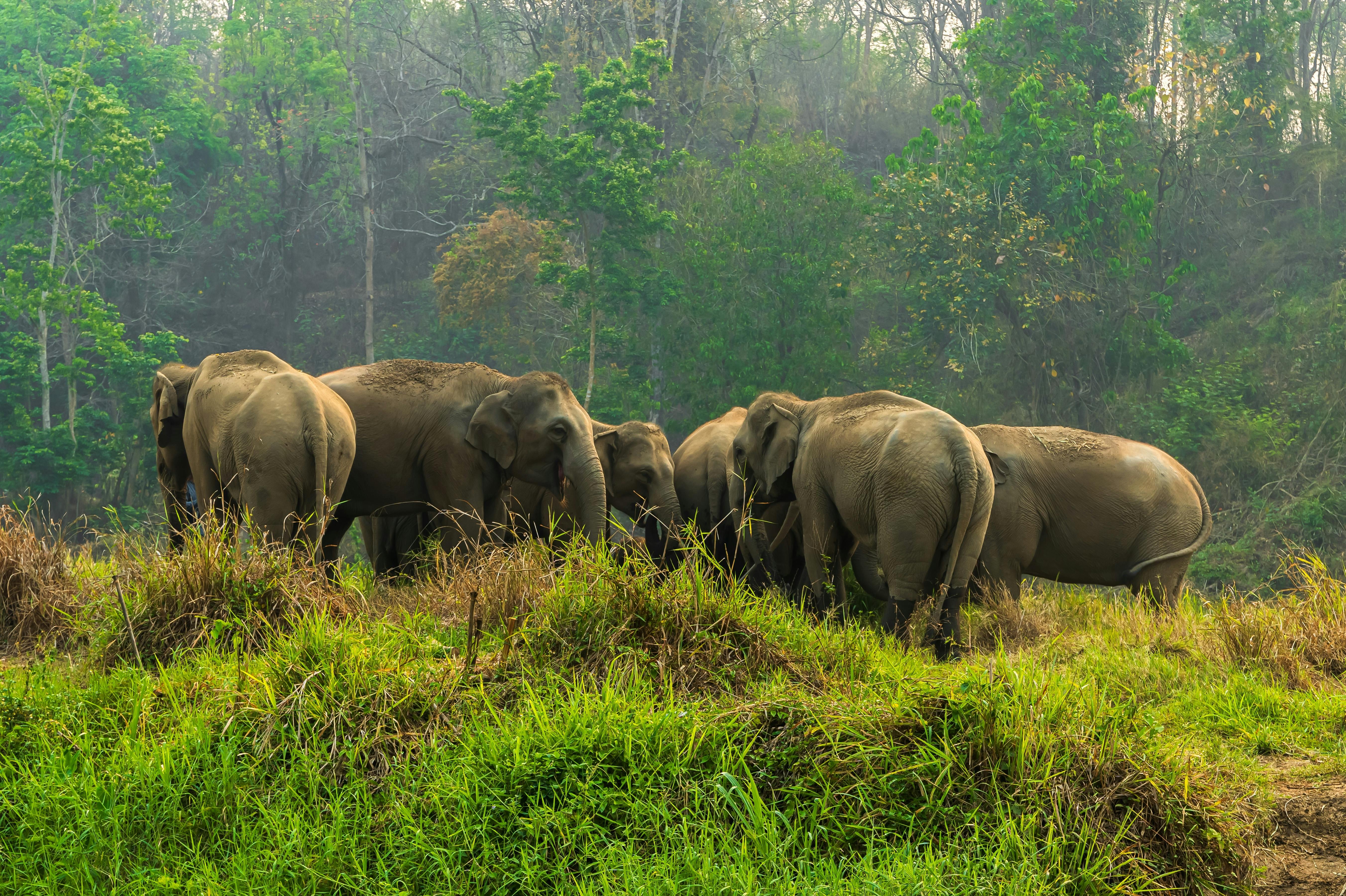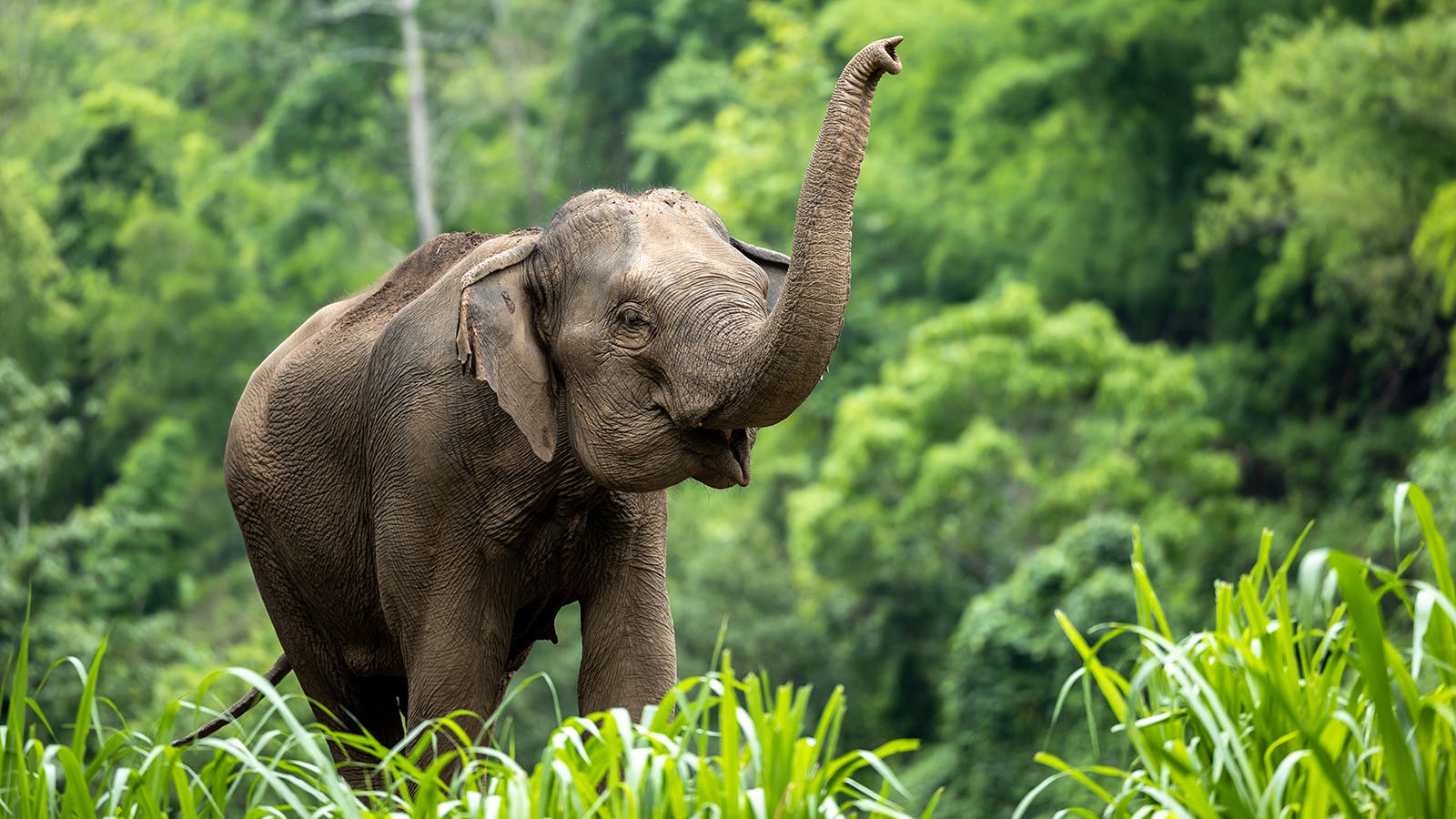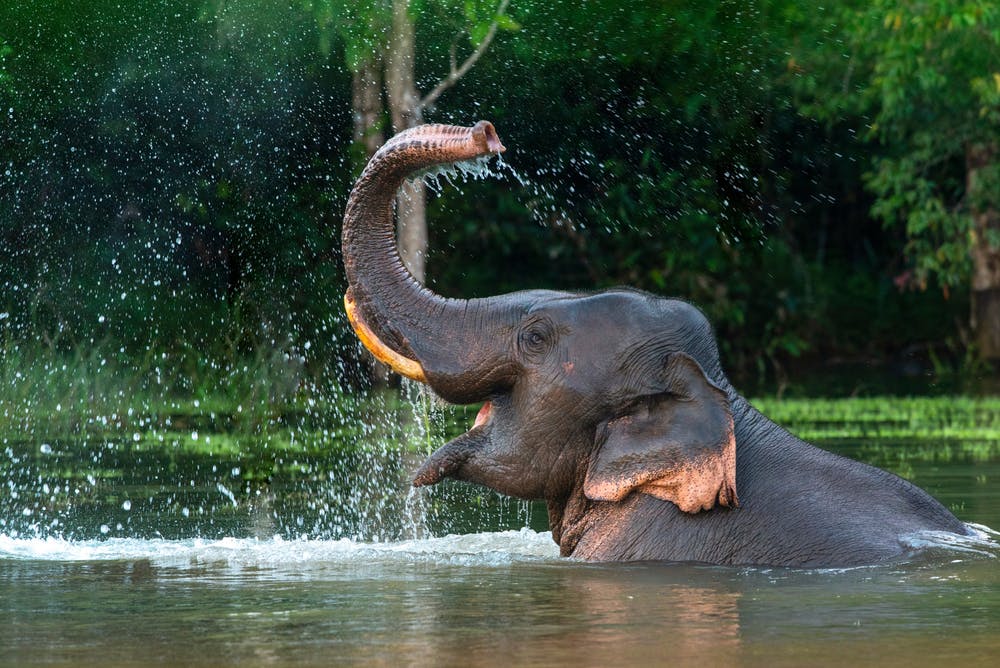Bangka
Bangka was born in 2000 and is the mother of Faya and Radjik

The Asian elephant is Asia's largest land animal, and with its thick gray skin and long trunk, it's one of the most recognized creatures globally. Did you know an elephant's trunk contains about 100,000 muscles? Yet, this powerhouse needs our help to survive. Their natural habitat is severely impacted and fragmented due to increasing deforestation and urbanization. That's why Rotterdam Zoo, as the coordinator of the European population management program, is dedicated to preserving the elephant.

about 50 years
about 3 meters
about 5 meters
♀ 3000 - 4000 kilograms
♂ up to 6000 kilograms
...The elephant uses its trunk as a snorkel when swimming?
...A male elephant is called a 'bull' and a female is referred to as a 'cow'?
The Asian elephant roams across various parts of Southeast Asia. Naturally, these majestic creatures inhabit tropical rainforests and grasslands. However, due to extensive logging and the expansion of agricultural and urban areas, their habitats have been dramatically reduced and fragmented. They can now be found in countries including India, Nepal, Bangladesh, Myanmar, Thailand, Cambodia, Vietnam, Malaysia, and Indonesia.

Elephants are found both in Africa and Asia. There are clear differences between the two species. For instance, the ears of the Asian elephant are a bit smaller, just like their tusks; in females, these aren't even visible from the outside. Also, their trunk has only one "finger" compared to the two in their African counterparts. Moreover, they have more toenails than their African relatives. Asian elephants have 5 nails on their front foot and four on the back, while the African elephants have just three.

Finding food and water is becoming increasingly challenging for the Asian elephant as the forests and grasslands they inhabit keep shrinking. Moreover, more barriers are emerging between the different areas they inhabit, thanks to roads, tracks, plantations, and cities. As a result, elephants encounter humans more often, leading to conflicts. For instance, lacking their natural food sources, elephants feed on farmers' sugar crops. These farmers, in turn, try to chase the elephants away. To provide ample space for these elephants without posing risks to humans, their habitats need to be reconnected.

There are various subspecies of the Asian elephant, each hailing from a distinct region, such as the Indian elephant, the Sri Lankan elephant, and the Sumatran elephant. Though distant relatives, over time, these subspecies have evolved to adapt to their natural habitats. In zoos, these subspecies sometimes interbreed. There's limited knowledge about the distinctions between these subspecies and the origin of the animals. Rotterdam Zoo is conducting research on the genetic makeup and diversity of Asian elephants in captivity. This ensures distant families are kept separate, ready to be reintroduced to their rightful places in the wild when the time is right.
The Asian elephants at Rotterdam Zoo have a spacious habitat, where there is a lot of variety for the elephants. The elephants have several toys and a number of feeding troughs where they can use their trunks to grab hay. Outside, the elephants also have a water feature to cool off on hot summer days. Their indoor enclosure has a sand floor so the elephants can sleep on a soft surface.
Discover the latest news about the Asian elephant.